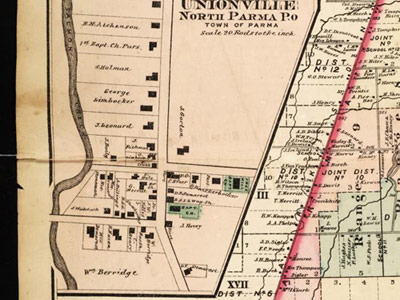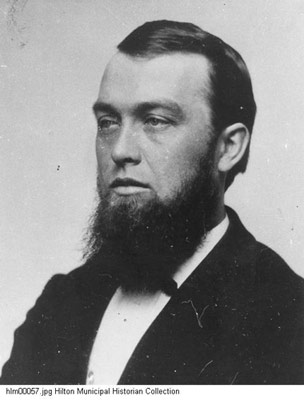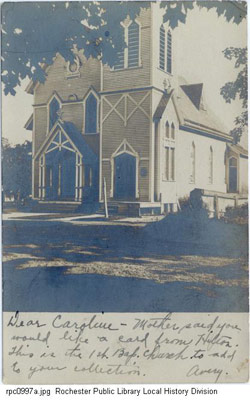|
Introduction Do you remember the last time you saw a fire? Maybe you have a fireplace in your home for warmth and comfort on a cold winter's night. Perhaps your school had a bonfire as part of a homecoming event. If you go camping, you might have enjoyed marshmallows over an open fire in a park campground. Human beings have long appreciated the advantages fire brings to our lives. Occasionally, however, fire can turn disastrous, even deadly. This kind of fire, brought about by carelessness or accident, or even intentionally set, caused people of the 19th century in America to develop new social connections and organizations to combat the threat of fire. Fire departments were begun in both cities and small towns. Also, new technologies were put to use to fight fires. Even so, fires continued to be a major problem and remain so to this day. This is the story of the Village of Hilton and its experiences with fire departments, fire-fighting equipment, and how its many fires have brought changes to the village.
Hilton, Monroe County, New York This map shows the Village of Unionville (later Hilton) in 1872. It is from F. W. Beers' Atlas of Monroe County, New York, 1872.
The Village of Hilton, New York is located in northwestern Monroe County, three miles south of Lake Ontario. It is part of the Town of Parma. The nearest large city is Rochester, some 20 miles away. The pioneer settler of the community was Jonathan Underwood, who arrived in 1805. Known for many years as Unionville, the village was incorporated in 1885 as North Parma. The name was changed to Hilton in 1896 in honor of the service of Reverend Charles Hilton, pastor of the Freewill Baptist Church. The village was mainly a farming community until the Rome, Watertown & Ogdensburg Railroad was built through Unionville in 1876. The agrarian community, which was surrounded by orchards and known for many years as the "apple capital of Monroe County", was now provided with fast and convenient shipping for its abundant produce. The population of the village increased along with manufacturing and commercial interests. Milling and fruit processing were the main industries while numerous stores and businesses were formed by local residents. The village grew and prospered through the years and the community has felt, and continues to feel, great pride for its local institutions including churches, businesses and its fire department. According to the 2000 census, the population of the village
in that year was 5856 persons.
Hilton and fire in the 19th century The Parma area was first settled by pioneers in the 1790's. Hilton was first settled in 1805. The first fire in the area was recorded around that time. These were the days before volunteer or paid fire companies were organized. Communities were on their own in fighting fires such as this. Neighbors working with limited equipment and water supplies were often unable to do more than watch as the flames destroyed their homes, barns and businesses. Most structures were of wooden frame construction. Barns were filled with hay, and were especially prone to becoming inflamed. The heat and light sources of the day were wood, coal, candles and kerosene, all occasionally sources of devastating fire.The threat of loss of life due to fire was great. In the 19th century each villager was required to keep at least one fire bucket filled with water at the ready at all times, as bucket brigades were the only way to respond to an emergency. Even in neighboring Rochester, the 1817 regulations required property owners to keep fireplaces and chimneys in good repair and to supply their residential properties with fire buckets. To get a sense of what a 19th century fire was like, read this eyewitness account of an 1874 fire in the Village of Hilton. This first major fire in Unionville (an early name of Hilton) took place at the Bates House, a hotel at Main Street and South Avenue. "Fire! Fire!" newspaper article - This article is from the Union & Advertiser, May 11, 1874. In 1877 the First Baptist Church building, on the northwest corner of Main and Hovey Streets was destroyed despite the efforts of the townspeople. It was becoming apparent that a better method of fighting fires was needed.
|


